From my teen years, I’ve been reading a daily newspaper. A few years ago, I switched to digital, because I got tired of my recycle bin being stuffed with copies of the Philly Inquirer. Each morning, I would read their newsletters and scan NPR’s front page, and read Heather Cox Richardson’s excellent Letters from an American. On the way to the bike trails or the hiking path, I would listen to my local NPR affiliate. This week, I unsubscribed from that and other political substacks, and the Inquirer’s daily newsletters except for Outdoorsy, the nature-related one. I used to like being informed. Now, as Bartleby might say, I’d prefer not to. I’m listening to a lot more music and podcasts, specifically the Sirius XMU channel which tries to be like a college station, and the new one from Serial about Keiko the orca, who was in Free Willy. I’ve also been reading more nature substacks, which you can find at Rebecca Wisent’s excellent HOME Nature Directory:
I enjoyed reading these two articles about reintroducing a hybrid American Chestnut tree that is resistant to fungal blight, and de-extincting the Passenger Pigeon, which are a big step to returning North American forests to a pre-colonial state. Of course, it would take a lot more to do that. Another step is returning stewardship of lands, whether wild or to be rewilded, to Native American people. A small parcel of land in New Jersey called the Cohanzick Reserve has been returned to members of the Nanticoke Lenni-Lenape Nation, and they, through the Native American Advancement Corporation, are managing the land now.
The American Chestnut was known as “the perfect tree” because of its predictable harvests of chestnuts. Unlike oaks and other trees that have “mast years” with large harvests, these were more dependable. Read on to learn more about why having the chestnut back is a good thing.
What about Passenger Pigeons? Many know that they flocked by the billion until overhunting drove them to extinction, but the sheer size of flocks of such birds—which fed largely on beech and other trees that have overtaken the forests in the wake of chestnut blight—had an immense impact on the forest. Their weight on branches lowered the canopy and allowed sunlight in; their guano fertilized the soil. Read on to learn why scientists are trying to bring them back.
The reintroduction of the Gray Wolf and American Bison have made great changes to the cattle-decimated landscapes of the West, and the reintroduction of the European Bison has already made an impact on that continent. (You’ll need a National Geographic subscription to read that content.)
While we can certainly expect setbacks to reducing the effects of climate change, I refuse to buy into the mindset that personal changes have zero effect. There’s a meme going around that essentially says that corporations are doing all the damage and our choices mean nothing, but they are doing much of that in our name. If an agricorp has manure lagoons, it’s because there’s a market for cheap meat. If Shell is drilling, it’s because fuel use is not decreasing. We are not helpless. I’m more fond of the cartoon that says, “what if it’s all a hoax and we created a better world for nothing?” If you decide to eat less meat, or buy an induction stove so you don’t breathe in methane gas, you may be making a microscopic dent in fossil fuel use; thousands of us will make a small impact. But we might also live healthier lives, no? Don’t give up, and don’t let them appeal to your inertia. They want us to feel hopeless. It’s not the side effect, it’s the point.
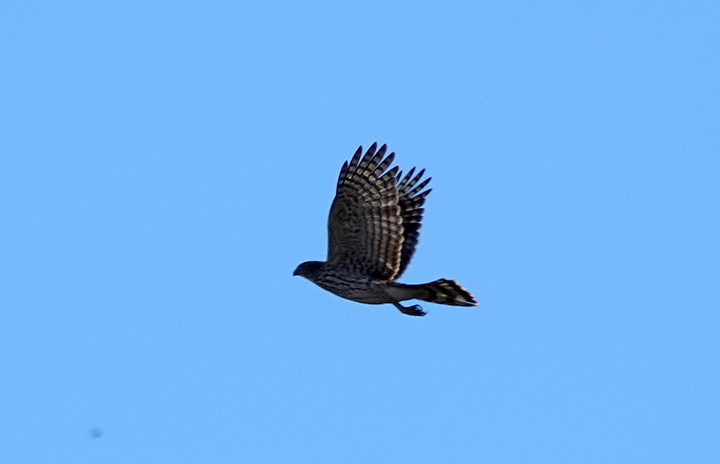
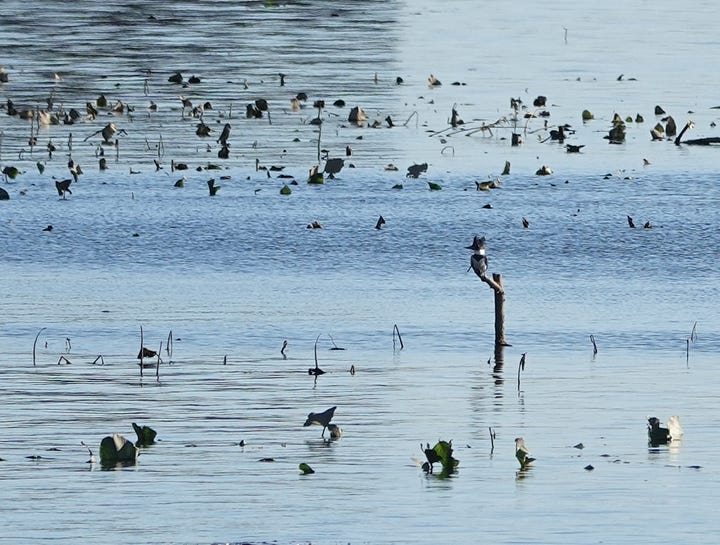
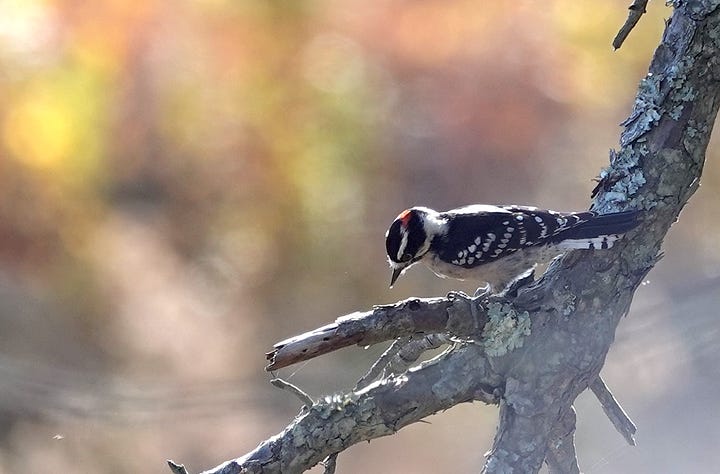
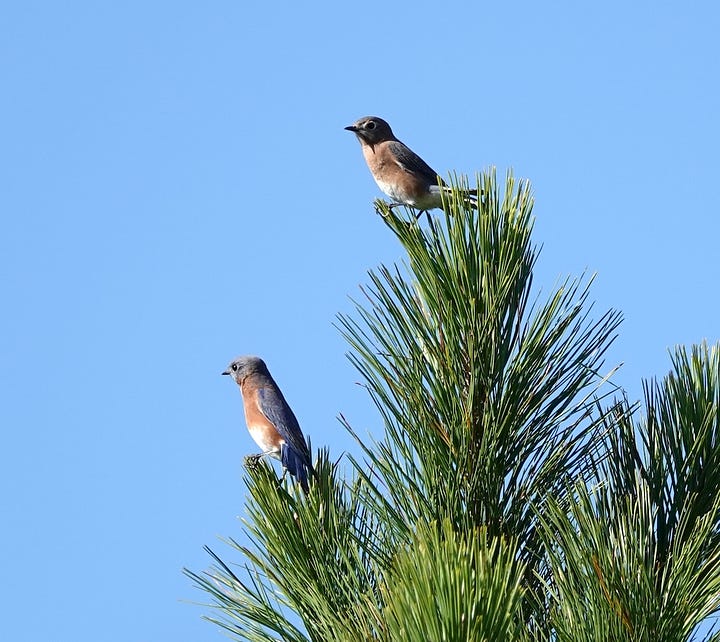
Some birds from my trips, to brighten your day. I’ve gone on a few trips since we returned from the Grand Canyon. We visited friends in Massachussetts and explored the Old Burial Ground in Jaffrey, walked the campus at Yale, and I went birding with the Philly Queer Birders at Pennypack Park along the Delaware. I found the House of Hades tile, apparently a tribute to the old Toynbee Tiles, in New Haven. I found the marker for the original Mason-Dixon Line while biking in Delaware. I saw the eagle with the broken wing on a walk with a friend in Morris County, and all three are symbolic of nothing.
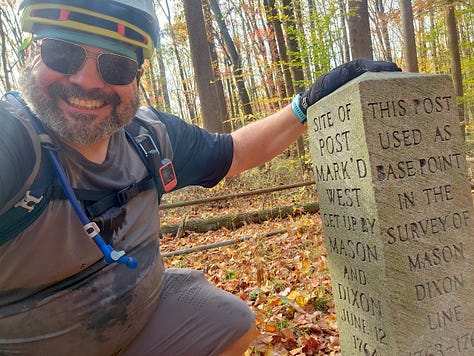
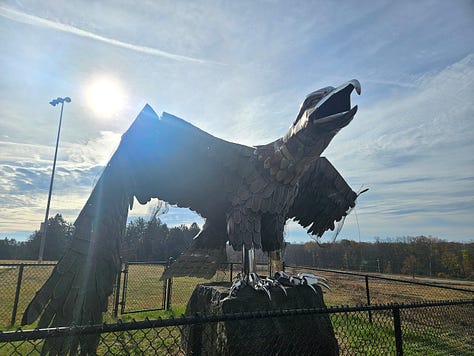
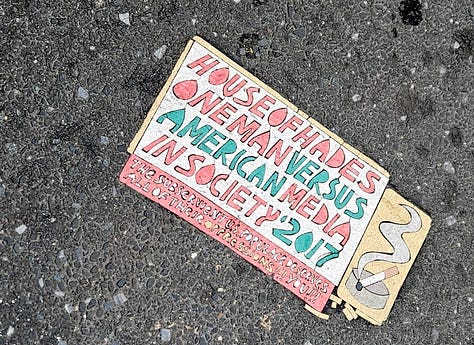
This Sunday I’ll write about our Grand Canyon trip.
A lot of the writing here lately, including mine, has the air of desperately scrabbling for hope until a voice rises to save us. I want to be clear: I am not going to wallow in despair, but no one is coming to save us. We have to save each other. Compassion can be infinite, but with limited resources such as time and effort, begin with those close to you, with mutual aid and so on. Those Zoom calls we had during the pandemic? Talk to people you care about. Build support systems. Don’t wait, begin now. As they say, the best time to start is five years ago, and the next best time is today.




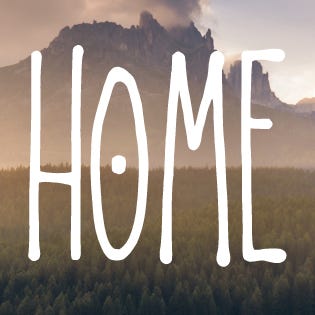

Really enjoy how the gorgeous bird photos give reality to your last line, and the comments about news.
Unhoooking myself from daily news, and especially politics, took years. It wasn't easy. I grew up in a very political and still highly engaged family. But it was beyond worth it. It's amazing how fast your compassion can burn out when you're riding the emotional roller coaster of the headlines.
Thanks for being in the fight! You know, the fight where we cook nice things for one another and share photos of birds and dismantle the oppressive systems brick by brick.
I have edited a fair number of 19th-century, New England memoirs for publication, & one constant in those diaries is talking about the communal feeling around the Chestnut harvest. It seems everyone went out with bags to scoop them up, and you were considered an ill-tempered miser & unneighborly if you refused anyone the right to tramp over your land harvesting them from the ground. I've never seen an estimate on how many calories these contributed to diets in pre-Civil War New England, but based on the records I've reviewed, it may have been considerable, especially as a food source (along with oysters and lobsters) utilized by the poor.